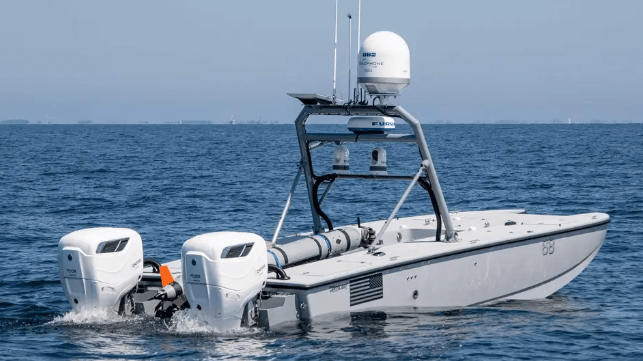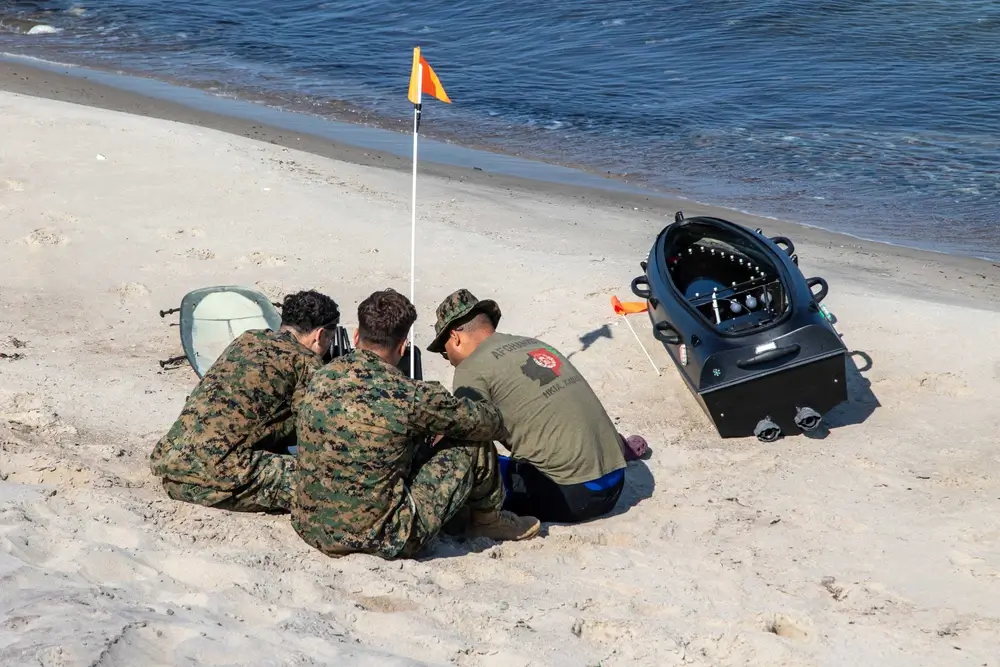U.S. Navy Tests Out Unmanned Boats for Recovering Downed Pilots

The U.S. Navy is using the annual BALTOPS exercise in the Baltic to test out new applications for unmanned systems, including a novel idea to use an unmanned boat for saving downed pilots who end up in the water.
The "Joint Personnel Recovery" scenario usually involves sending a manned force to find and rescue the pilot from a hostile area. Instead, 6th Fleet personnel tested out the idea of sending a USV out to the distressed pilot instead, recovering them and bringing them back to safety – all unmanned, and remotely controlled from a nearby vessel. It may be the first time that this particular application for a USV has been tested.
"You can assume more risk with a USV – it has a pretty low profile, it’s not easy to spot compared to our usual, larger recovery force . . . it adds resources to recovering in high-threat areas," said Joe Klein, the program manager for Joint Personnel Recovery for the exercise. "It’s a relatively simple scenario, but we’re interested in the communications aspect, like ‘How do you vector the USV into positions,’ and ‘how do we strap the recovery target into the vehicle, as an unmanned system?’ So we’re working through those dilemmas, while also testing it as a solution to some of our problems."
This is one of several areas the Navy is testing out during BALTOPS, which is usually a testbed for concepts in small boat operations, underwater robotics, mine countermeasures and EOD. Other technology under evaluation this year include unmanned boats that can launch their own unmanned mini-submersibles for minehunting; automatic target identification for minehunting robots; and shallow-water mapping of areas near the surf zone, a dangerous but necessary task for amphibious assault and over-the-beach operations.
Navy EOD teams usually clear the way for these operations, but the U.S. Marine Corps' new Littoral Explosive Ordnance Neutralization (LEON) is working in parallel to test autonomous systems to counter naval mines near amphibious landing zones. “The Marine Corps in particular is concerned with protecting the very shallow water to the surf zone,” said Chief Warrant Officer 2 Zach Rubemeyer, commanding officer of a LEON platoon within the 1st Marine Logistical Group. “We work with several unmanned systems that help us to detect and neutralize those threats."

U.S. Marine Corps EOD team tries out a kayak-shaped unmanned surface vehicle during a mine-disposal exercise on the beach, BALTOPS 23 (USN)
The Baltic is a perfect place to test minehunting and EOD techniques because of its abundance of unexploded ordnance. The area has an estimated 80,000 pieces of UXO left over from World Wars I and II, which provides NATO partners a wealth of targets to identify and disarm. Finding and neutralizing underwater explosives also benefits commercial maritime interests and local communities.
